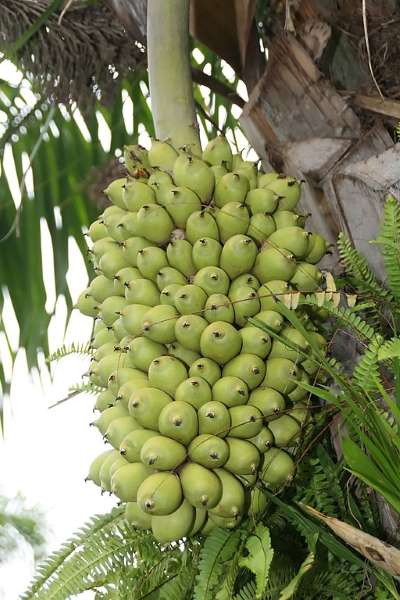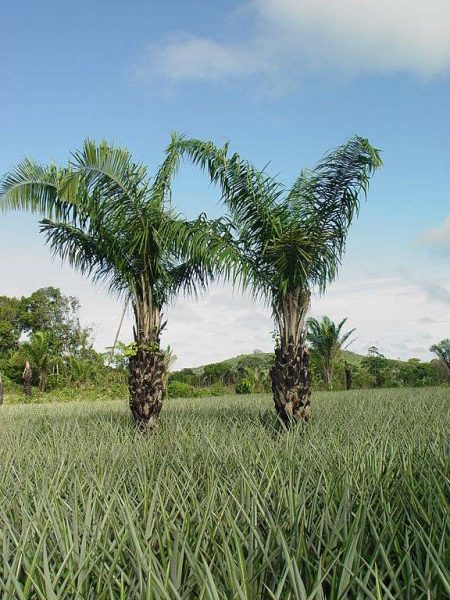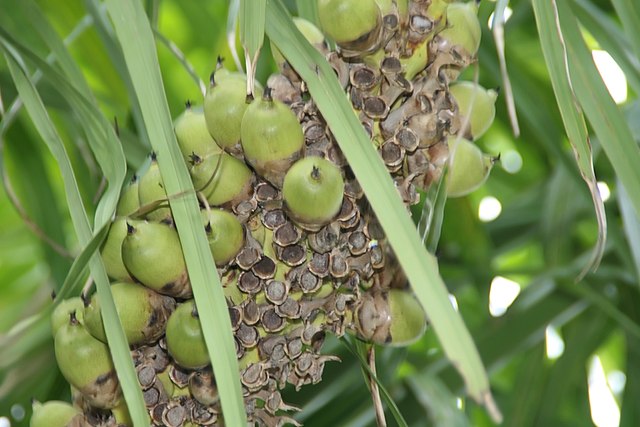
The Attalea phalerata palm belongs to the Arecaceae family. It is also commonly known as Shapaja, Bacuri, Acuri, Ganguri, Guacuri, Coqueiro-acuri, Cabeçudo, Auacuri, Urucuri, Motacú and Urucuri,
According to Negrelle (2015), is a species of great ecological importance, because it serves as a food resource for wildlife and is widely used by the inhabitants of the Amazon region, especially in traditional medicine and cosmetics. Attalea phalerata is also considered to have a high economic potential for human and animal food, as well as for construction material and biodiesel production.

Geographical distribution
According to Negrelle (2015) (3), Shapaja is a highly distributed species in the southeast and west of the Amazon basin, being found in Colombia, Peru, Bolivia, Brazil and Paraguay. It grows in open areas, gallery forests and savannahs. Thus, it is distributed in different types of forests, being found at high altitudes (approximately 1,000 m.a.s.l.) in the Andes, up to seasonally flooded lowlands of the Amazon (160 m.a.s.l.).
General description of the plant and fruit
Attalea phalerata is a solitary palm with trunks between 2-10 m high and 24-65 cm in diameter approximately; it has between 9-24 pinnate leaves. It produces flowers throughout the year and fruits twice a year. The bunches of this palm hang on long peduncles. The fruits are edible and have an oblong to ellipsoid shape between 6.5-8 cm in length and 4-5 cm in diameter, the epicarp is fibrous and yellow when ripe (Peralta, 2009) (4). The pulp is an important source of nutrients, especially carbohydrates and lipids; it has a coloration ranging from yellow to orange due to the presence of carotenoids, some precursors of vitamin A, which act as antioxidants preventing heart disease, some types of cancer, neurological disorders, etc. (Cardoso, et al, 2020) (1).

Uses of Attalea phalerata
This species is common in the daily life of the inhabitants of the Amazon, and its main forms of use are identified below:
food uses
The fruits and oil of the Shapaja or Motacú are edible, as well as the seed, which are used to make butter; the palm heart is also generally consumed in salads. On the other hand, coleopteran larvae (suris) are harvested from the decaying trunks of this palm and then consumed raw or cooked (Sosnowska, et al., 2010) (5).
The fruits are consumed in the region and occasionally sold in local markets. Likewise, according to Negrelle (2015) (3), the fruits are cooked for the production of juices, ice creams and jellies, highlighting their nutritional value and sensory attributes. They are also used for feeding pigs and other animals.
On the other hand, Cardoso, et al. (2020) (1) explain that the oil in the pulp of Attalea phalerata is very similar to olive oil, rich in saturated fatty acids, as well as in polyunsaturated and monounsaturated acids (mainly oleic acid), the latter being very beneficial to health when included in the diet, acting favorably on the lipid profile, thus preventing heart disease, among others.

Medical uses
Within the traditional Amazonian medicine, Shapaja has multiple applications, being used the different parts of the plant. For example, the roots are used for the preparation of an extract as a treatment for hepatitis; it is also effective against gastrointestinal diseases. The peel that covers the seeds of the fruit has astringent properties, capable of curing diarrhea (for this purpose a decoction should be taken with the peels in a cup of water); this preparation is also used to stop bleeding from wounds and sores. On the other hand, five seeds are used to make a syrup to which honey or cane honey is added, being a remedy to cure coughs or inflammation of the bronchial tubes. The ashes of the seeds or caluchas are used as remedies for diseases of the lower abdomen and to stimulate fertility. From the bark of Attalea phalerata to prepares a medicinal syrup (Peralta, 2009) (4).
Against indigestion and constipation it is recommended to eat five fruits of Motacú roasted. To treat urination and kidney problems in general, it is usual to take the decoction of five crushed fruits in addition to the root (approximately 200 grams) in 750 ml of water (Peralta, 2009) (4).
Traditionally, the oil extracted from the fruit is used as a moisturizing lotion for skin care and as a scalp tonic to strengthen the hair and give it shine. The oil is macerated for 30 days with the peel of the orange peel, then used especially for skin care. To prevent facial and hand wrinkles, a tablespoon of this oil is rubbed with dry aloe vera or aloe vera crystal. It is also very effective against sunstroke, to apply Motacú oil with ripe or dry seeds of Urucú -Bixa orellana- (Peralta, 2009) (4).

Other uses
The species Attalea phalerata is an ornamental plant widely used in landscaping and urban gardening in general (Negrelle, 2015) (3).
Shapaja leaves are often used to cover the roofs of houses. The leaves are also used for utilitarian and handicraft purposes, such as brooms and to braid baskets, mats, fans, among others.
The seeds are used for the elaboration of ornaments and handicrafts. Also the charred seeds or caluchas are used to paint the eyebrows while stimulating their growth. The soaked ash of the seeds is used to fix the colors in the fabrics. Suri larvae are also frequently used as fishing bait (Peralta, 2009) (4).
Shapaja fruit residues can be used for the production of charcoal and activated carbon; in addition, its pulp can be used for ethanol production (Coronado, et al., 2016) (2).
References
- Cardoso Coimbra, M., Moreno Luzia, D. M., and Jorge, N. (2020). Physicochemical characterization of bacuri pulp oil Attalea phalerata Mart. ex Spreng. (Arecaceae). Science & Amp; Agricultural Technology, 21(3), 1-11. Retrieved from http://revista.corpoica.org.co/index.php/revista/%20citationstylelanguage/get/apa?submissionId=1791&publicationId=1265
- Coronado, M., et al. (2016). Obtaining activated carbon from the endocarp of shapaja (Attalea phalerata) from the San Martin region, using a physical method. Revista Forestal del Peru, 31(2), 90-103. Retrieved from https://revistas.lamolina.edu.pe/index.php/rfp/article/view/1030/pdf_20
- Negrelle, R. (2015). Attalea phalerata Mart. ex Spreng: Botanical, ecological, ethnobotanical and agronomic aspects. Ciênc. Florest. 25 (4), 1.061-1.066. Retrieved from https://www.scielo.br/j/cflo/a/Jp4hz9FfWtrpHJSQYVdngdr/abstract/?lang=pt
- Peralta, C. (2009). Natural potential and uses of Motacú(Attalea phalerata) in the Amazon region of Bolivia. In: Peralta, C., Llanque, O. and Zonta, A. (eds.). Forest products. Social, natural and financial potential in smallholder households in Amazonia (69-78). Beni: Universidad Autónoma del Beni. Retrieved from https://www.researchgate.net/publication/318780248_PRODUCTOS_DEL_BOSQUE_Potencial_social_natural_y_financiero_en_hogares_de_pequenos_productores_
- Sosnowska, J., Ramírez, D. and Millán, B. (2010). Palms used by the Asháninka Indians in the Peruvian Amazon. Rev. peru biol. 17 (3), 347-352. Retrieved from http://www.scielo.org.pe/scielo.php?script=sci_arttext&pid=S1727-99332010000300009.

Economist (Central University of Venezuela). Full professor and researcher attached to the “Edgar Abreu Olivo” Agrifood Research Center, Universidad de Los Andes. Doctor from the University of La Laguna (Spain). Award “One of the 10 most consulted authors of the Saber ULA university portal” (2005); prize in the III Essay Contest of the Central Bank of Venezuela BCvoz Economico, 2016, with the work “Theobroma cacao: transformation and consumption of the “food of the gods” in Venezuela and the world” (co-authored).
This post is also available in:
![]() Español (Spanish)
Español (Spanish)
